Courage is rightly esteemed the first of human qualities because it is the quality which guarantees all others.
Winston Churchill

 (The federal government tried to seize this motel worth $1.3 million even though its owner was not accused of breaking the law). Photo from Institute for Justice.
(The federal government tried to seize this motel worth $1.3 million even though its owner was not accused of breaking the law). Photo from Institute for Justice.Caswell, whose father built the motel in 1955, has not been accused of any wrongdoing, and the local Motel 6, Fairfield Inn, Walmart, and Home Depot have had similar problems with drug activity. But the government argues that Caswell was "willfully blind" to drug dealing and could have done more to prevent it.The new Congressional spending agreement cut the DOJ funds for the program in 2016 forcing the Department to announce the ending of the Equitable Sharing Program which will force local police departments to act in compliance with state law. Next step: reform the Federal program and additional state action.
Caswell, who has been running the motel since 1983, says he has no way of knowing what his customers are doing behind closed doors. He has always cooperated with the police, calling them to report suspicious activity and offering them free rooms for surveillance and sting operations.
In 2009 he got his reward: a forfeiture notice. Police had never suggested additional steps he could take to discourage crime or warned him that the motel—which supports him, his mother, his wife, their son, their daughter-in-law, and their granddaughter—could be at risk.
This cruel surprise was engineered by Vincent Kelley, a forfeiture specialist at the Drug Enforcement Administration who said he read about the Motel Caswell in a news report and found that the property, which the Caswells own free and clear, had an assessed value of $1.3 million. So Kelley approached the Tewksbury Police Department with an "equitable sharing" deal: The feds would seize the property and sell it, and the cops would get up to 80 percent of the proceeds.
Under Massachusetts law, by contrast, police would have received only half the loot, and forfeiture may have been harder. State law says a seized property has to be used not just to "facilitate" a drug crime but "in and for the business of unlawfully manufacturing, dispensing, or distributing controlled substances," which suggests a stronger connection.

For a pop song, the tune is consciously bluesy in the way of "Harlem Nocturne" or "You Don't Know What Love Is", but the words go beyond, and the vocabulary and phrasing are very unusual:According to Steyn, it's due to Ella Fitzgerald that the song gained its cache. After catching Matt Dennis play it in a Reno nightclub, she decided to record the song (and recording four different versions over the years). It was only years later, in 1957, that Sinatra recorded it.
Try to thinkDennis' music is memorable because of the arresting flat nine in Bar Three, and big leaps when the tune's going up, followed by small slips back down. It's a tune that's made for saloons - those up-leaps of anger and passion, and the slip-downs into dejection and despair. But that third bar could easily trip up a lyricist or at least put a speed-bump in his text. Instead, Earl Brent gets around it with a four-syllable word that, on those notes, is rendered onomatopoeic: When the singer sings "uncomf'tably near", you hear his discomfort. Even more remarkably, Dennis and Brent match it when the moment recurs in the next eight bars and again at the end:
That love's not around
Still it's uncomf'tably near
My old heart
Ain't gainin' no ground
Because my Angel Eyes ain't here...
Angel EyesAnd again in that word on that interval - "unbearably" - the singer sounds as if he truly can't bear it, not much longer. In theory, the melody sounds as if it ought to be an instrumental - one of those things like "Sophisticated Lady" or "Prelude To A Kiss" that sounds less like a song than a tune that someone's stuck words on - but Brent not only finds words that fit perfectly, but four-syllable ones at that:
That ol' devil sent
They glow unbearably bright...
Pardon meThe tune is so bluesy that, in the musicologist Ted Gioia's words, it "invites a soloist to pull out every stale minor blues cliche". Which happens rather a lot on instrumental versions. But the lyric makes it dark and strange and raw: a great ache of a melody with an oddly self-aware tale to tell. Dennis wrote his composition in D minor, which suits it perfectly, but the middle section is major in character and almost an inversion of the main theme: now the music leaps down and then climbs small steps back up. Lyric-wise, if the main section is like eavesdropping on someone's private pain, the release is an invitation to gather round and listen to him tell his story:
But I gotta run
The fact's uncommonly clear...
So drink up, all you people
Order anything you see...
Hey drink up all you people
Order anything you see
And have fun you happy people
The laugh and the drinks on me
Try to think that loves not around
Still it's uncomfortably near
My poor old heart aint gaining any ground
Because my angel eyes aint here
Angel eyes, that old devil sent
They glow unbearably bright
Need I say that my loves mispent
Mispent with angel eyes tonight
So drink up all of you people
Order anything you see
And have fun you happy people
The drink and the laughs on me
Pardon me but I got to run
The facts uncommonly clear
I got to find who's now the number one
And why my angel eyes aint here
Scuse me while I disappear
The great streets . . . all ended in the same general area, marked by the Capitoline Hill, Forum, Palatine, and Colosseum. Over the centuries this area had grown into a grand display of state architecture . . . There, Romans, provincials, and foreigners gawked at temples, basilicas, theatres, porticos; heaps of marbles . . . gilded capitals, triumphal arches, honorific statues . . . all this was the grand show that reflected the glory of Rome and her empire (Rome: Profile of a City, 312-1308, Richard Krautheimer (1980))Below, Circus Maximus, seating capacity of 200,000. Imperial palace on the Palatine Hill to the left. On the other side of the Palatine were the forums and the Colosseum. (From Roman History Facebook Page)(Interior of Pantheon)

Try as Cassiodorus might, his efforts to halt the erosion were in vain. Sewers were in need of repairs. So were aqueducts . . . The public granaries had 'collapsed through old age'. . . Bronze statues all over were being looted '. . nor are they mute; the ringing sound they give forth under the blows of thieves . . . wakes the dozing watchman.' Marble, lead, and brass were looted from public buildings . . . Temples, Cassiodorus complains, 'have been handed over to spoliation and ruin' . . . Many of the great mansions, too, had been abandoned . . .The tenements and apartment houses suffered even more. Theodoric the Great has a positive historical reputation for what is seen as his relatively enlightened rule. Of course, "enlightened" is a relative term. He became sole ruler of Italy in 493 when, at a celebration banquet marking the end of a four year war with his predecessor and future co-ruler Odoacer, he terminated the peace agreement by coming up behind Odoacer and, with one swipe of his sword, sliced him from the shoulder down to his waist. He was also responsible for the arrest and execution in 525 of the man often referred to as "the last Roman", the philosopher Boethius, who served as one of his principal administrators.
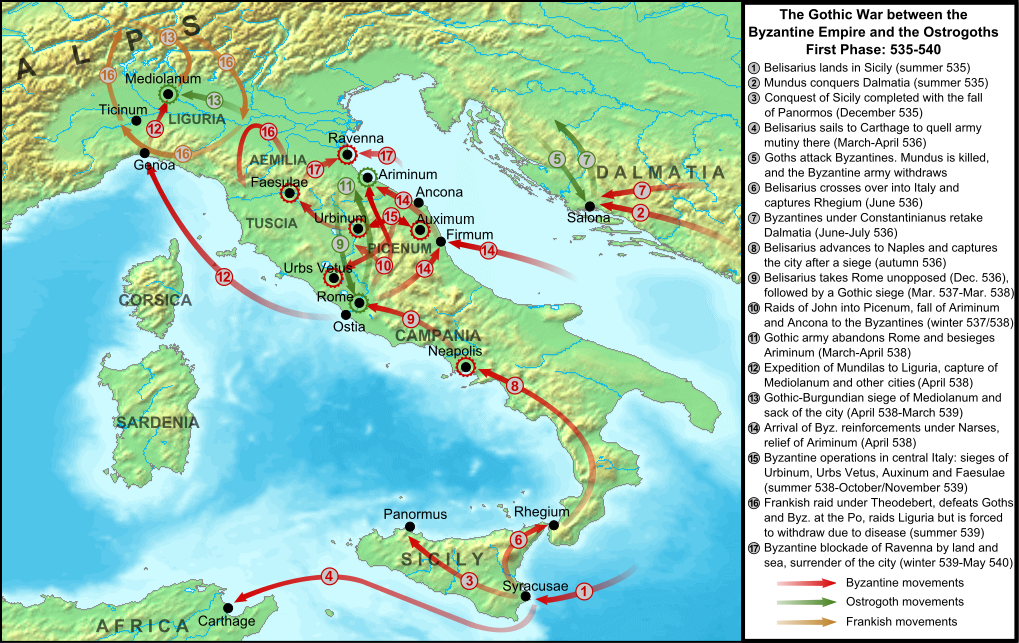
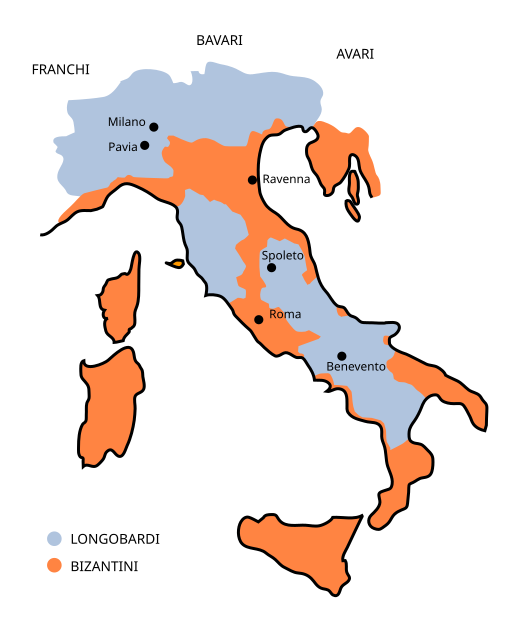
The largest number came from among the peoples recently converted in the West. Franks, Irish and English, joined in the eighth century by Frisians and South Germans, struggled over the Alpine passes on foot or horseback . . . Hostels were set up in Provence and North Italy to shelter them on the road . . .The pilgrims consisted of bishops, clergy, monks and nuns, nobles and "ordinary folks in large numbers" making the perilous journey. Most only made the journey once. During the mid-9th century one of the child pilgrims was the young boy who became Alfred the Great, King of Wessex and victor over the Vikings.
Once again, estates outside the walls, private and Church property, were looted and burned, country folk and monastic congregations were driven into the city . . . The aqueducts, neglected and partly destroyed in the Lombard sieges, functioned badly or not at all . . . time and again the Tiber flooded the town and the fields across the river [the flood control structures of the Roman empire had long ago decayed] . . . buildings were in poor repair.A new threat arose in the early 9th century. After completing the conquest of North Africa in 698, Moslems invaded Sicily early in the 9th century. They also began raiding the Italian mainland, in 846 looting the churches of Saints Peter and Paul, which at the time lay outside the walls of Rome and the threat continued into the early 10th century.
no need to search for the remains of antiquity. They were ever present: the Pantheon, the Colosseum . . . the ruins of the great thermae and of the palaces of the Palatine; the remains of the temples on the forum and the Campus Martius, the forums themselves, those of Nerva, Augustus, Trajan; the triumphal arches and the monumental columns of Marcus Aurelius and Trajan, the mausolea of Hadrian and Augusuts, the obelisks . . . Ancient sculpture, too, was plentiful: the reliefs on the triumphal columns and arches . . . Wall paintings, mosaics, and stucco decoration must have been accessible in the ruins of the Golden House, on the Palatine, in the vaults of the Colosseum - many lost to us but surviving in their medieval reflections.After the turmoil of the 9th and 10th centuries, large scale building activity resumed. As Krautheimer points out, while not a commercial center, Rome:
The hoi polloi of Romans and visitors, especially pilgrims, would be overwhelmed by the sheer size of a building or a colossal statue surviving in fragments and spin strange yarns about it . . .
had developed resources of a different kind: the vast income of the Church . . . the swollen bureaucracy of the Curia; the city's place as the foremost legal center of Europe with lawyers, clerks, and scribes attracting business; the flux of pilgrims . . . the banking operations of and connected with the ChurchThis revival, unlike the earlier ones, was sustained and by 1527, when the first real census was undertaken, the population had risen to 55,000. It was also in these centuries that most of the damage to the structures of ancient Rome occurred. Krautheimer describes the city of those centuries as:
. . . not so much as a coherent unit, but as a conglomerate of built-up clusters separated by large ruins, gardens, and stretches of wasteland, with only scattered houses linking the clusters.Settlement in 13th century Rome. You can see how little of the area within the walls is urbanized. (From the Mendicant Revolution)
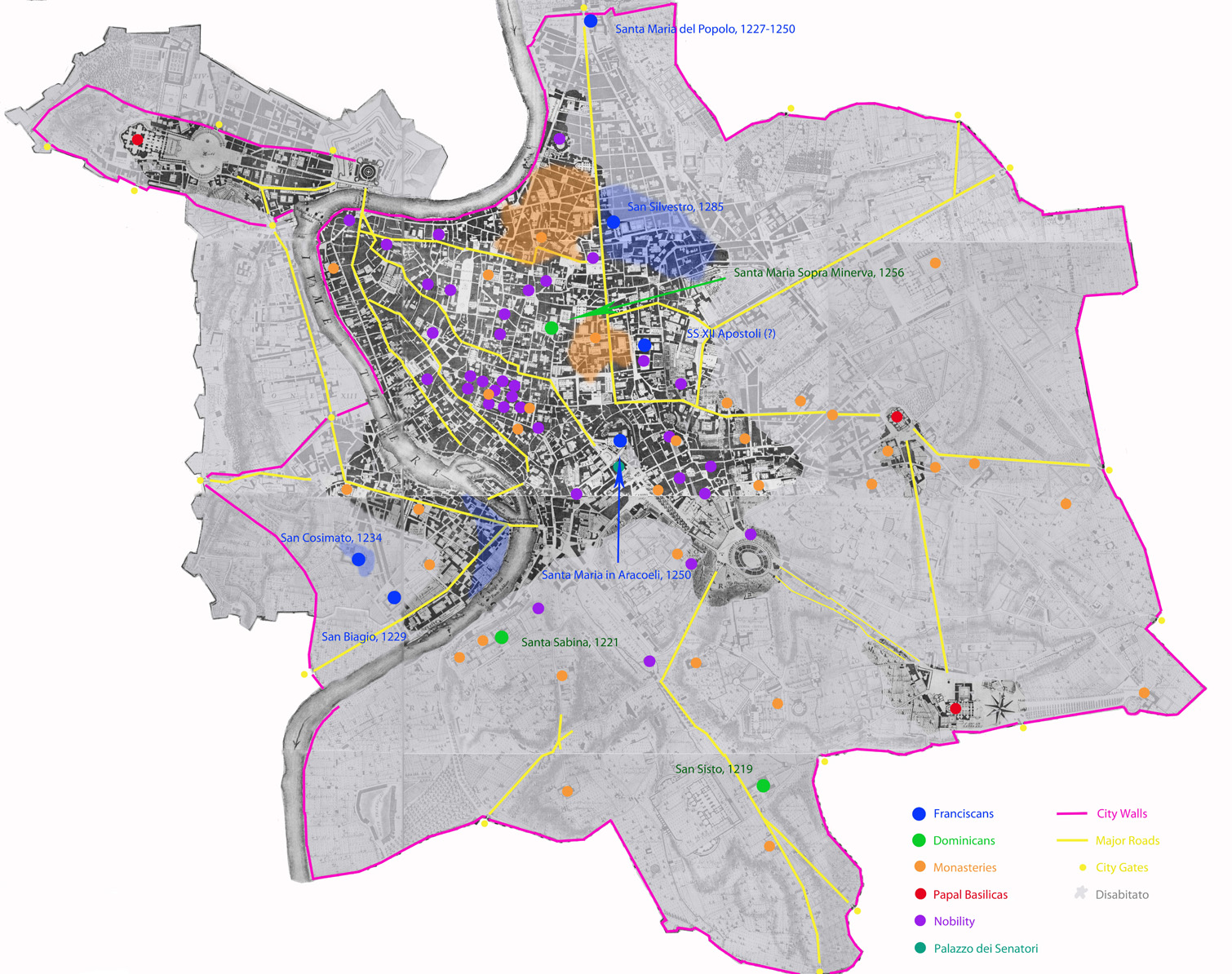
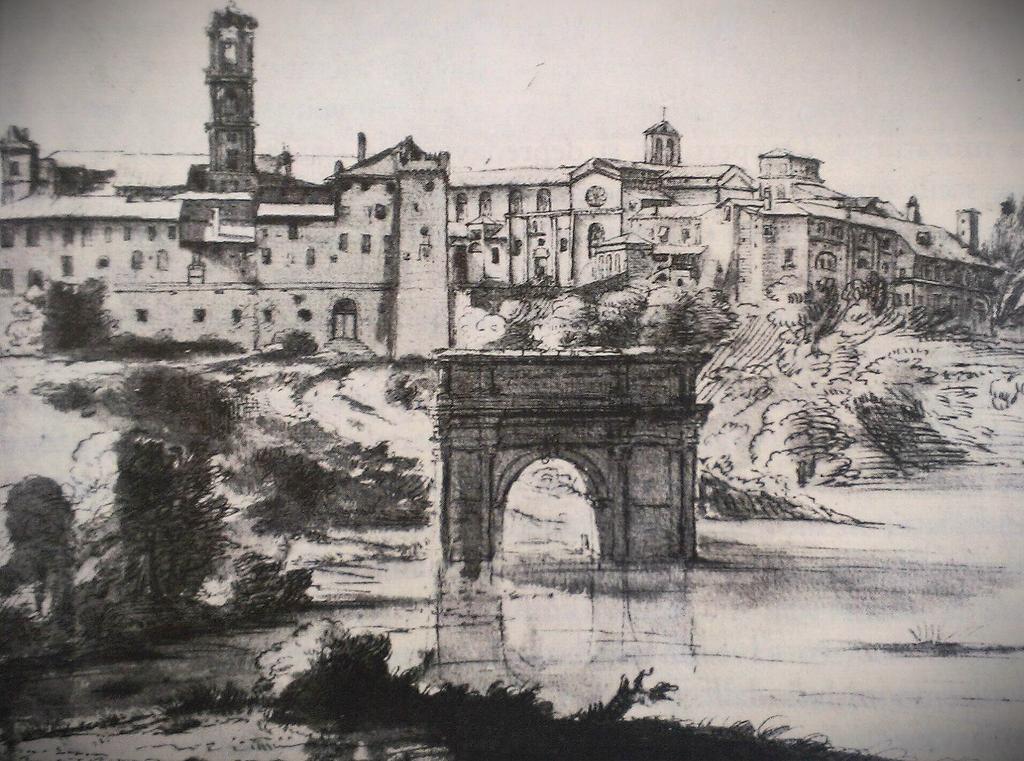
 Apollo 17 Mission Insignia
Apollo 17 Mission Insignia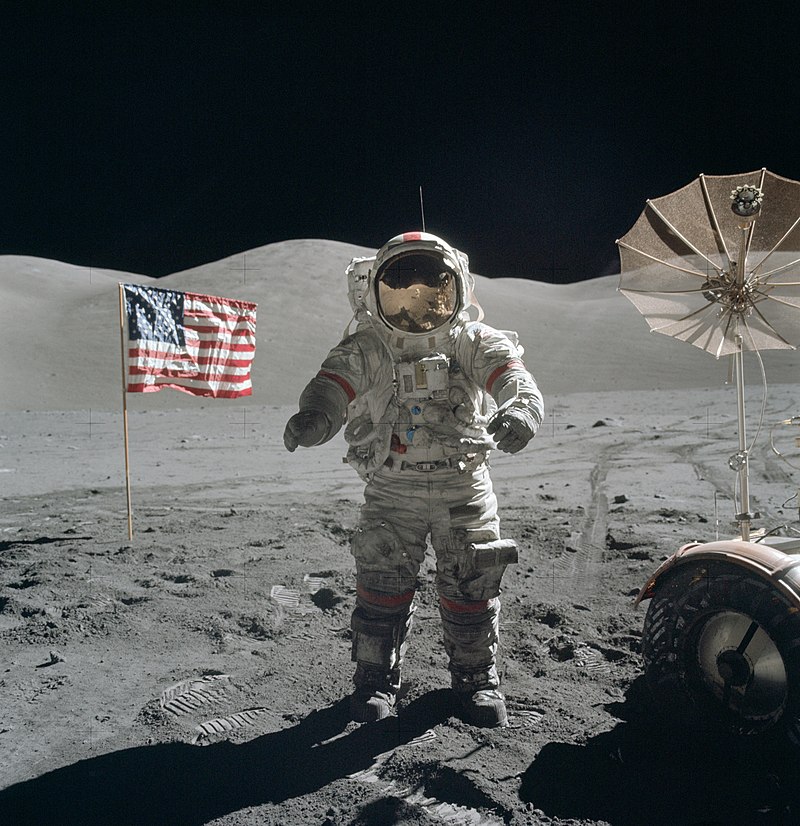 (Eugene Cernan, December 13, 1972)
(Eugene Cernan, December 13, 1972) (Harrison Schmitt)
(Harrison Schmitt) 
an unprecedented pledge to inaugurate his term by repudiating the constitutional command to “take care that the laws be faithfully executed.” There has already been too much lawlessness from the presidency since September 11th; Rubio’s celebratory anticipation of further illegalities represents a new low.What irresponsible ignorance from the Senator! We are shocked!
Not a treatyAccording to the State Department the JCPOA is merely a "political commitment".
Not an Executive Agreement
Not a signed document
Not legally binding
There is freedom within,
There is freedom without,
Try to catch the deluge in a paper cup
There's a battle ahead,
Many battles are lost,
But you'll never see the end of the road
While you're travelling with me
Hey now, hey now
Don't dream it's over
Hey now, hey now
When the world comes in
They come, they come
To build a wall between us
We know they won't win
Now I'm walking again to the beat of a drumThe song was the Crowded House's biggest hit in the U.S. Their follow up album Temple Of Low Men contained several gems but didn't sell well. Here are three to sample:
And I'm counting the steps to the door of your heart
Only the shadows ahead barely clearing the roof
Get to know the feeling of liberation and release
Hey now, hey now
Don't dream it's over
Hey now, hey now
When the world comes in
They come, they come
To build a wall between us
Don't ever let them win.
Don't stand aroundThe countrified Better Be Home Soon
Like friends at a funeral
Eyes to the ground
It could have been you
We might still survive
And rise up through the mess
If you could change your life
And never be the same
The video for I Feel Possessed shows a live performance but the album soundtrack is overdubbed"People are strange
God only knows
I Feel Possessed
when you come round"